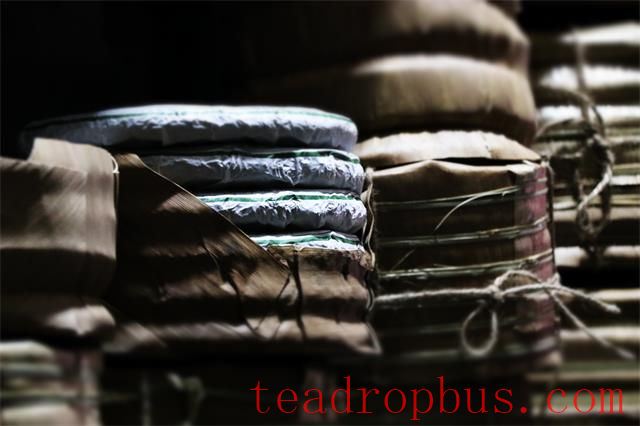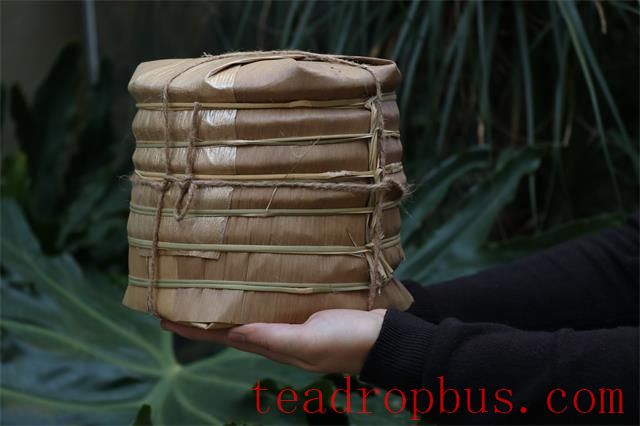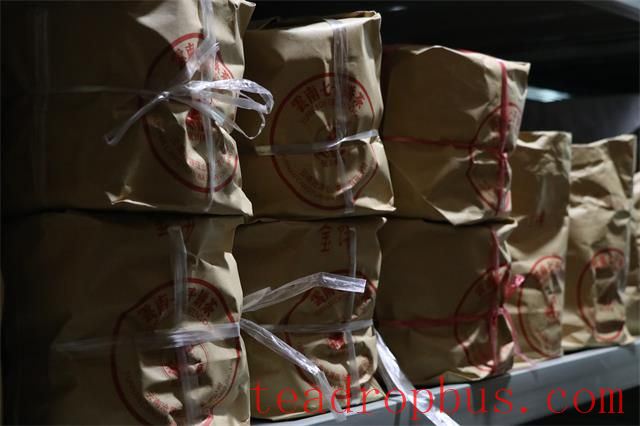How to store Tea is almost a question every Pu'er tea enthusiast must face. Of course, if the quantity is very small, only a few cakes or three to five kilograms, then there's not much to consider; simply protect against dampness and avoid direct sunlight. However, if you have a significant amount of tea to store, such as dozens of pounds or even being a member of the “100-pound club,” and are looking forward to an ideal “post-processing” effect in several or even tens of years, then this issue should be taken more seriously.

How to Store Pu'er Tea
1. Temperature: The temperature for storing Pu'er tea should generally be between 20-30°C. Temperatures that are too high or too low are not conducive to the aging process of Pu'er tea. Additionally, it is important to avoid air conditioners and direct light that could alter the quality of the tea.
2. Humidity: Maintain relative humidity at around 65%-75%. Humidity levels that are too high or too low are also not beneficial for the aging process of Pu'er tea. In dry weather, Pu'er tea (especially raw tea) will enter a dormant state, which is not conducive to aging. You can use a humidifier to increase air humidity or frequently wipe the floor with a wet towel, which can both add moisture and clean. If you live in a particularly dry environment, you may want to buy a hygrometer from a home goods store to better monitor humidity changes. In very humid and hot places, where the tea comes into contact with a lot of moisture, it can rapidly age and deteriorate, leading to mold. In these conditions, pay attention to ventilation to disperse moisture.
3. Ventilation: Pu'er tea needs to “breathe,” and its transformation requires oxygen and moisture. If storing Pu'er tea at home, place it in a dry and well-ventilated area. Adequate air circulation contains a rich supply of oxygen, which benefits the proliferation of microorganisms in the tea and promotes the internal conversion of Pu'er tea ingredients, accelerating its aging. However, be careful not to let the wind directly blow on the tea or hang it on a balcony. Such placement can cause the tea aroma to dissipate and the taste to become bland. Therefore, while Pu'er tea requires moderately circulated air, it should not be placed in a drafty location. Although the conversion process may be slower, it helps preserve the true essence of the tea.

4. Shade: “Shade” means placing Pu'er tea in a spot not exposed to direct sunlight, minimizing the impact of strong light. Also, avoid exposing Pu'er tea to a high-temperature environment, especially during periods of high heat and humidity in the south. High temperatures can easily cause Pu'er tea to lose its activity and are not conducive to the natural aging process. Over time, Pu'er tea can “die,” losing its value for storage and conversion.
5. No Strange Odors: All teas are extremely susceptible to absorbing other odors. Sometimes tea is used in homes to remove odors. When storing Pu'er tea, it is important to keep it in a clean environment free from strange odors. Tea readily absorbs foreign odors, and once absorbed, the odors cannot be removed. Therefore, strive to maintain a clean and Odor-free storage environment, avoiding placing the tea near perfumes, cigarettes, pickled vegetables, or other sources of household odors. If a dedicated tea room is not feasible, at least keep the tea separate from other odors.
In addition, the amount of Pu'er tea stored should be appropriate, and a small room should not contain too much tea. When storing, it is recommended to separate raw tea from ripe tea and new tea from aged tea to avoid mutual influence. Do not place the tea directly on the ground; it should be at least 15 cm above the ground. Do not place it against walls and periodically rotate the position of the tea.
If choosing to store entire batches, it's best to use bamboo Leaf packaging, which is good for storage. For single cakes, additional packaging is needed; using paper bags and boxes is common, but do not store them in sealed bags or plastic bags, as this would prevent the tea from coming into contact with oxygen, affecting the aging process. For long-term storage of Pu'er tea, it is best to keep it in its original barrel with bamboo shells, as bamboo shells themselves have properties that help protect against moisture, dust, and light.

How Pu'er Tea Converts
1. Oxidation Pathway: Oxidation plays a secondary role in the conversion process of Pu'er tea. Excessive oxidation can consume large amounts of active substances, leading to weak aromas, dispersed texture, and diminished aftertaste, making it difficult to achieve the “better with age” characteristic.
2. Microbial Pathway: Microbial action is the primary fermentation process in the later stages of Pu'er tea conversion. Without the high temperature and high humidity environment of “ripe tea piling,” the number of microorganisms is greatly reduced, and the fermentation speed slows down significantly. However, this process preserves a large amount of active substances in the tea. Under the influence of microorganisms, subtle transformations occur within the tea over time. After sufficient years of aging, if the tea's raw materials and processing techniques are excellent, it can exhibit the distinctive qualities of premium aged raw tea, such as “rich and smooth texture, unique aroma, deep throat resonance, and comfortable bodily sensation.”
Both Raw and Ripe Teas Have Long-Term Storage Value
Ripe tea has already undergone the fermentation and conversion process, but it is like an “accelerated early-born child” compared to aged raw tea, lacking the unique nuances imparted by time. Moreover, newly-made ripe tea often has an unpleasant “piling odor.”
After months to years of storage, the piling odor gradually diminishes or disappears, and the tea's nature and aroma become more stable, reducing any harshness. Over time, the tea becomes more mellow, smoother, and thicker. Well-stored aged ripe tea and newly-made ripe tea offer vastly different experiences in terms of texture and aroma.

The optimal duration for storing ripe tea is a matter of personal opinion, but some experts who have studied Pu'er tea for many years suggest 5-8 years, and not exceeding 10 years. However, some experienced tea enthusiasts say that properly stored ripe tea over 15 years old can achieve an even better taste, though this may vary depending on the specific tea.
Regarding raw tea, the post-storage conversion process (also known as storage technology) is a critical phase in the formation of the tea's quality, and is considered an essential part of the Pu'er raw tea production process. “The product is only half-finished when it leaves the factory,” and the consumer's hands mark the beginning of the second half of the process.
Hence, there is the saying that good raw tea must be “good raw material + good processing + good storage,” which is also the theoretical basis for the “better with age” characteristic of Pu'er tea.
However, even for raw tea, the storage period is not necessarily “the longer, the better.” I previously wrote about the concept of the “optimal tasting period” for tea. Although the “optimal tasting period” for Pu'er tea is much longer compared to other types of tea, it is not infinite. Any substance containing “active substances” cannot maintain its activity indefinitely and has its own life cycle, whether it's sun-dried and Compressed tea leaves or microorganisms involved in post-fermentation.